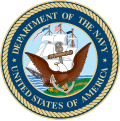UB 148 at sea 2.jpeg
From Warlike
File:UB 148 at sea 2.jpeg
UB_148_at_sea_2.jpeg (476 × 367 pixels, file size: 36 KB, MIME type: image/jpeg)
This file is from Wikimedia Commons and may be used by other projects. The description on its file description page there is shown below.
Summary
| DescriptionUB 148 at sea 2.jpeg |
The former German submarine UB 148 at sea, after having been surrendered to the United States. U.S. Navy History: "UB-148—a UB.III series, small, coastal submarine— was laid down during the winter of 1917 and 1918 at Bremen, Germany, by Aktiengesellschaft Weser; launched on 7 August 1918; but never commissioned in the Imperial German Navy. She was completing preparations for commissioning when the armistice of 11 November ended hostilities. Two days later, she was interned at the Swedish naval base located at Karls-krona, Sweden, to await her fate. By the terms of the armistice, Germany was required to destroy her aircraft and submarines or surrender them to the Allies. On 26 November, UB-148 was surrendered to the British at Harwich, England. Later, when the United States Navy expressed an interest in acquiring several former U-boats, to use in conjunction with a Victory Bond drive, UB-148 was one of the six boats allocated for that purpose. Her American crew, sent to England early in March 1919, took her over later that month, began preparing her for the voyage to America, and placed her in commission, Lt. Comdr. Harold T. Smith in command. The U-boat departed England on 3 April 1919 in company with Bushnell (Submarine Tender No. 2) and three other submarines—U-117, UB-88, and UC-97. That task organization, the Ex-German Submarine Expeditionary Force, steamed via the Azores and Bermuda to New York, where it arrived on 27 April. After a period of repairs, the submarines were opened for visits by the public. Tourists, reporters and photographers joined Navy technicians and civilian shipbuilders in swarming over UB-148 and the other submarines. Following that, UB-148 received instructions to call at ports along the east coast of the United States in the immediate vicinity of New York City in conjunction with the bond drive. At the conclusion of the drive that summer, she and U-lll were subjected to extensive tests and trials to evaluate their performance capability. When that experimentation ended, she joined U-117 and U-140 at the Philadelphia Navy Yard, where they were laid up pending final disposition. She was dismantled at Philadelphia; and, during the summer of 1921, her hulk was used in gunnery and aerial bombing tests conducted off the east coast. Following those tests, UB-148 was sunk by gunfire from Sicard (DD-346)." [1] |
|||
| Date | ||||
| Source |
|
|||
| Author | USN | |||
| Other versions |
|
Licensing
| Public domainPublic domainfalsefalse |
This file is a work of a sailor or employee of the U.S. Navy, taken or made as part of that person's official duties. As a work of the U.S. federal government, it is in the public domain in the United States.
|
 | |
| This file has been identified as being free of known restrictions under copyright law, including all related and neighbouring rights. | ||
https://creativecommons.org/publicdomain/mark/1.0/PDMCreative Commons Public Domain Mark 1.0falsefalse
Captions
Items portrayed in this file
depicts
1919
File history
Click on a date/time to view the file as it appeared at that time.
| Date/Time | Thumbnail | Dimensions | User | Comment | |
|---|---|---|---|---|---|
| current | 23:47, 5 May 2010 |  | 476 × 367 (36 KB) | wikimediacommons>Materialscientist | brighten, minor crop to center the image and reduce background |
File usage
The following page uses this file:
Metadata
This file contains additional information, probably added from the digital camera or scanner used to create or digitise it.
If the file has been modified from its original state, some details may not fully reflect the modified file.
| _error | 0 |
|---|

